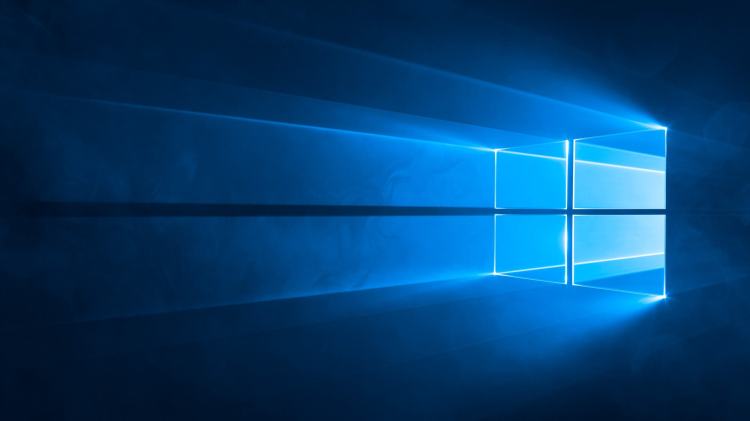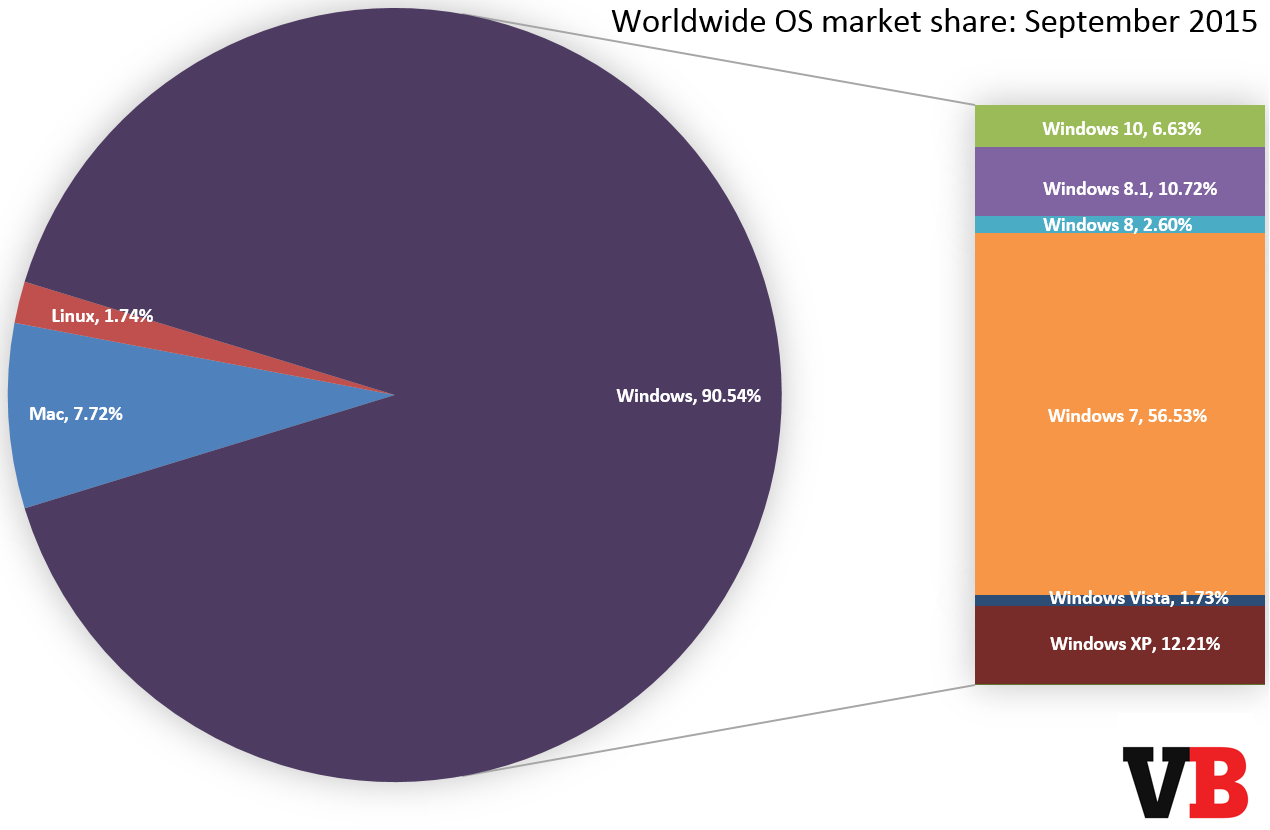Unsurprisingly, Microsoft’s free Windows 10 upgrade had a bigger impact in the first month than in the second. Windows 10 has now captured more than 6 percent market share, according to the latest figures from Net Applications.
After four weeks, Windows 10 was installed on over 75 million PCs. While we don’t have an update yet for the two-month mark, Microsoft is aiming to have 1 billion devices running Windows 10 “in two to three years,” though that includes not just PCs, but smartphones, consoles, and other devices, as well.
Windows 10 had 5.21 percent market share in August, and gained 1.42 percentage points to hit 6.63 percent in September. We weren’t expecting as big a jump as we saw in August, but growth has indeed slowed dramatically in Windows 10’s second month. It’s too early to say if this slowdown is permanent, but we doubt it — especially with Microsoft’s Baidu partnership to push Windows 10 in China.
Unsurprisingly, Windows 10’s predecessors are worse off. Windows 8 gained 0.04 percentage points to 2.60 percent, while Windows 8.1 fell 0.67 points to 10.72 percent. Together, they owned 13.32 percent of the market at the end of September, down from 13.95 percent at the end of July. As we noted last month, the duo never even passed the 20 percent market share mark (they peaked at 16.45 percent in May), and with Windows 10 now available, they never will.
Before Windows 10’s debut, Windows 7 passed the 60 percent market share mark in June. It’s also unlikely to ever to see that figure again: Windows 7 saw the biggest drop of any operating system version in August, down 1.14 points to 56.53 percent.
Despite Windows 10’s inevitable rise, Windows 7 will likely keep its title as the most popular OS for at least this year. Windows 7 overtook Windows XP way back in September 2012, and has never looked back, steadily increasing its share even throughout 2015 (it’s still up overall from 55.92 percent in January).
Windows Vista, meanwhile, slipped 0.09 points to 1.73 percent. Windows XP somehow managed to gain 0.07 points to 12.21 percent. The free upgrade to Windows 10 doesn’t apply to Vista or XP, so it’s no surprise that we’re not seeing large drops there. That said, Microsoft is likely still hoping XP sees single market share digits this year, as businesses are still reacting to the operating system’s end of support in April 2014.
On the whole, Windows lost a bit of share in August, down 0.30 points to 90.54 percent. Mac OS X and Linux in turn capitalized, gaining 0.19 points to 7.72 percent and 0.11 points to 1.74 percent, respectively.
Amusingly enough, this means Linux has managed to pass Windows Vista again. This hasn’t been the case for years, believe it or not.
Net Applications uses data captured from 160 million unique visitors each month by monitoring some 40,000 websites for its clients. This means it measures user market share.
If you prefer usage market share, you’ll want to get your data from StatCounter, which looks at 15 billion page views every month. The operating system figures for September are available here.
VentureBeat's mission is to be a digital town square for technical decision-makers to gain knowledge about transformative enterprise technology and transact. Learn More


